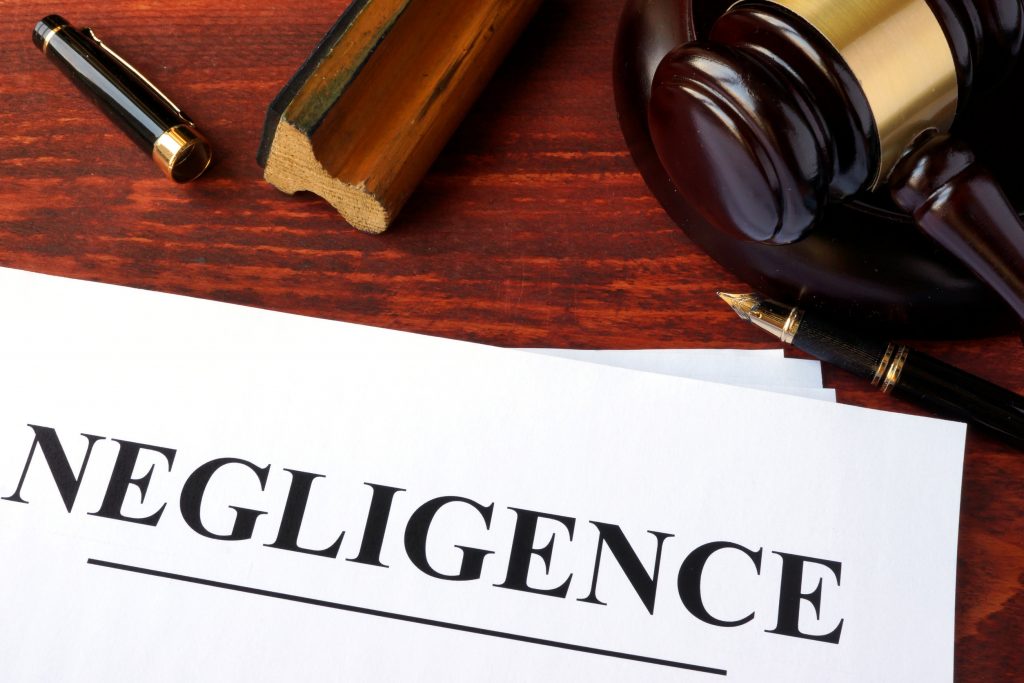What Are the Elements of Negligence in a Personal Injury Case?
If you or a loved one suffered an accident or injury that was caused by another person, you may be the victim of a negligent tort. In personal injury law, negligence refers to a person or entity’s failure to exercise care to the degree that a reasonable person would have exercised in the same situation.
However, simply making an allegation of negligence isn’t enough to receive compensation. In order to win your case, you or your personal injury attorney will need to prove the four elements of negligence. Learn more about each of these elements below.
#1: Duty of Care
The basis of any negligence case is a duty of care, sometimes also called a standard of care. In order for someone’s actions to amount to negligence, an injured victim (referred to as a plaintiff in court) must prove that the person or business they are suing (referred to as the defendant) had a legal responsibility to exercise reasonable care while taking the action that ultimately harmed the plaintiff.
For example, drivers have a duty of care to keep their attention focused on the road and other motorists and/or pedestrians around them. In the same sense, a business owner has a duty of care to provide and maintain a safe environment for their customers (this is also called premises liability).
#2: Breach of Duty
A breach of duty refers to a defendant’s failure to exercise an owed duty of care towards the plaintiff. In order to establish negligence, it must be proven that the defendant breached this duty. A reasonable business owner, for example, would be expected to clean up a puddle of spilled coffee in their café as soon as possible. If a customer slips and falls because the shop owner ignored the puddle, their actions (or lack thereof) may amount to negligence.
On the other hand, just because someone is injured doesn’t necessarily mean the duty of care has been breached. If the coffee shop owner reacts reasonably to the spilled coffee by mopping it up and putting out a wet floor sign to adequately warn customers, but a patron still slips and falls, the defense could argue that the café owner fulfilled their duty of care and was therefore neither negligent nor responsible for the accident.
#3: Causation
Of all the elements of negligence in a personal injury case, causation is the most contentious. In fact, some legal experts, such as Professor David G. Owen, posit that there should actually be two separate elements of causation—cause in fact and proximate cause.
Cause in fact refers to the direct connection between an at-fault party’s negligence and the harm done to a victim. For example, if a person riding their bicycle gets hit by a speeding car and suffers a traumatic brain injury, the actual cause of the injury was the driver’s actions.
Proximate cause, on the other hand, refers to the legal cause of an injury amounting to negligence. Not only did the speeding driver hit the bicyclist, but causing an accident is a foreseeable result of speeding. Of course, plaintiffs may have limited recourse if their own negligence played a role in their injury—for example, if the injured bicyclist had been riding their bike under the influence of drugs or alcohol.
#4: Harm
Finally, a plaintiff or their legal representative must prove the final element of negligence, which is that the defendant’s breach of duty was the proximate cause of a plaintiff’s damages, or harm. Generally speaking in personal injury cases, this harm must stem from physical injuries or property damage. That being said, plaintiffs may also recover compensation for damages such as pain and suffering (physical and emotional) and associated economic losses, such as lost wages or medical bills.
When a loved one dies as a result of negligence, their family may file a wrongful death claim on their behalf. The element of harm in these types of cases extends to the decedent’s loved ones and may include damages such as funeral expenses, loss of earnings and potential income, and loss of society, companionship, and guidance.
How Patterson Legal Group Can Help
Proving the four elements of negligence can be a complicated and at times challenging legal process. If you or a loved one has been injured because of another person or entity’s negligence, you could be entitled to significant compensation. But in order to establish your case and secure the maximum settlement, you’ll need an experienced and knowledgeable lawyer on your side.
The attorneys at Patterson Legal Group have a long history of assisting personal injury victims throughout Kansas and Missouri. With law offices located in Wichita, Topeka, and St. Joseph, the legal help you need is available when and where you need it. We are also available by phone and via LiveChat 24/7 to answer your questions and arrange a free, no obligation consultation.
To get in touch with a qualified Kansas or Missouri personal injury attorney, give us a call at (888) 687-2400. Let our compassionate, qualified legal team handle the insurance companies while you focus on rest and recovery. If we don’t win your case, you don’t pay us. Learn more about our “no win, no fee” promise.







